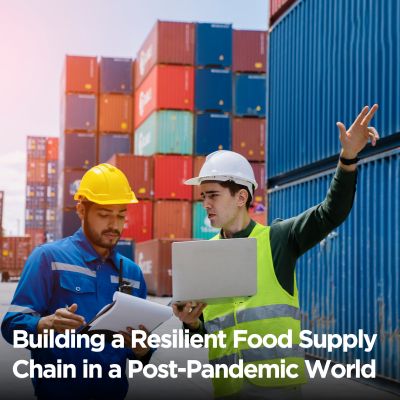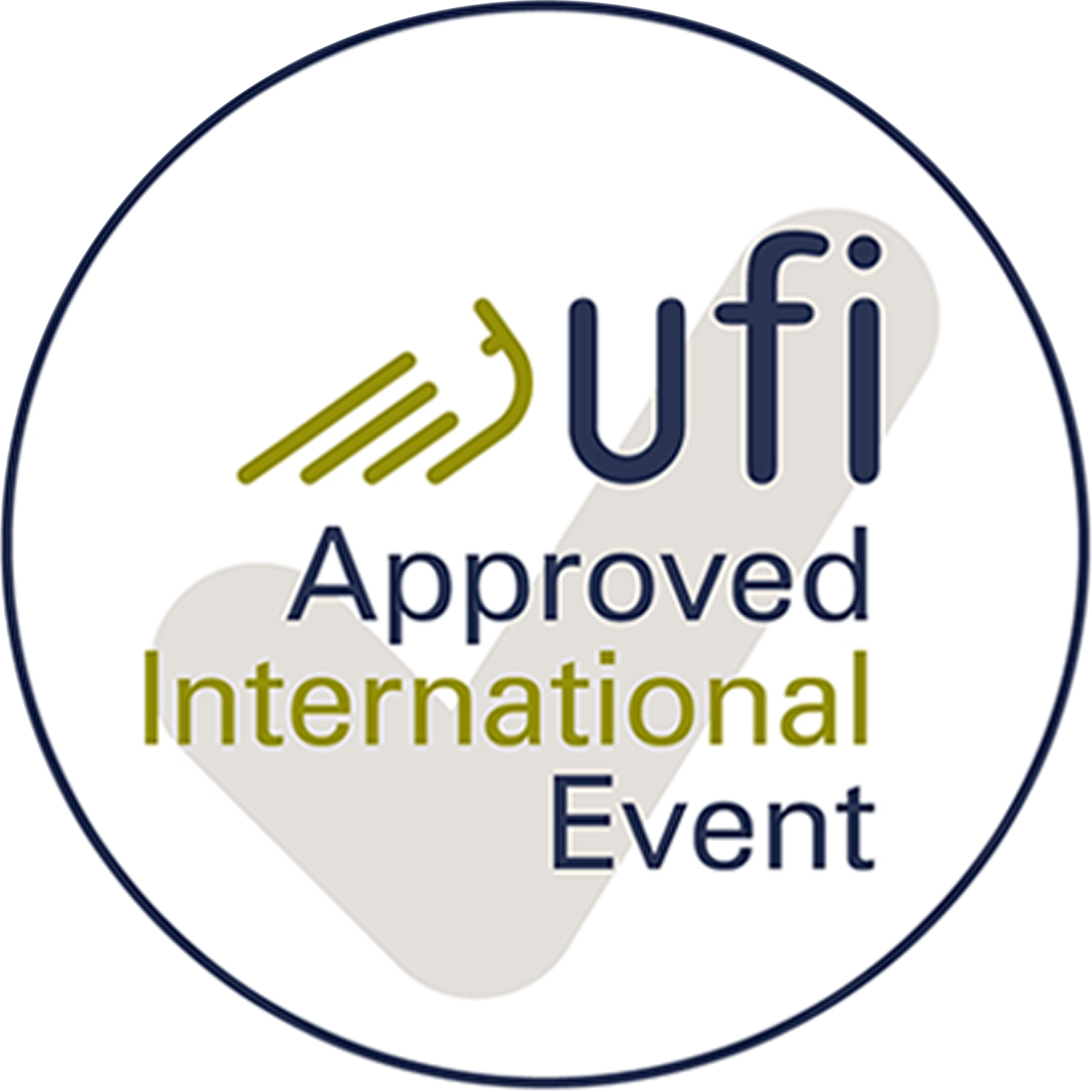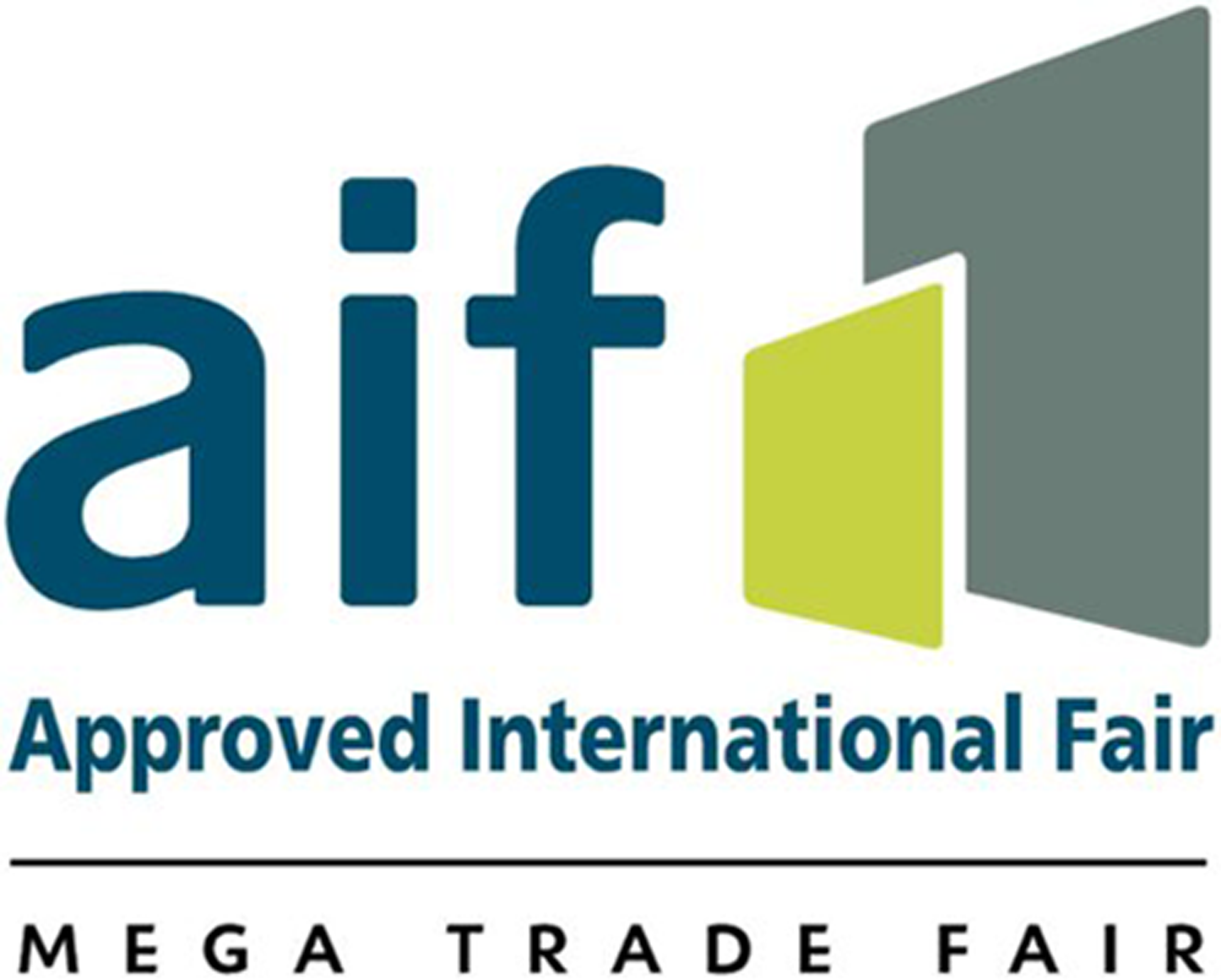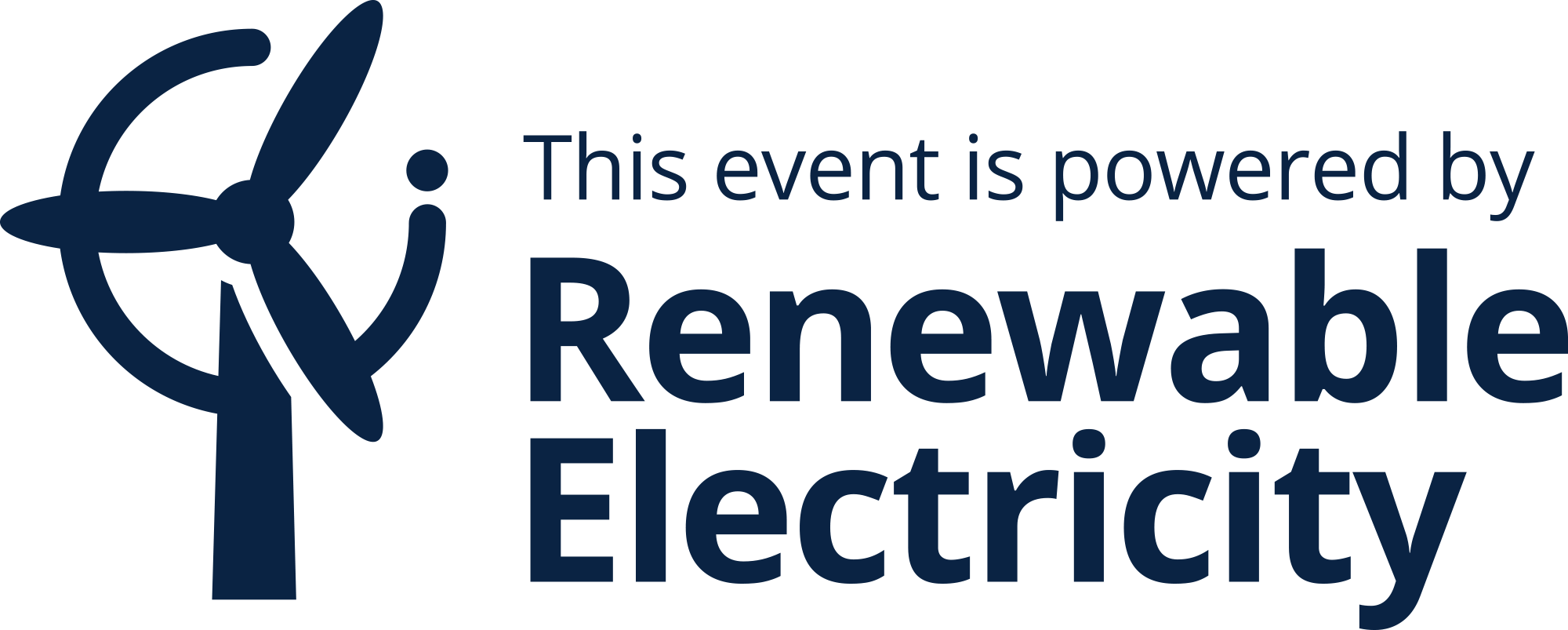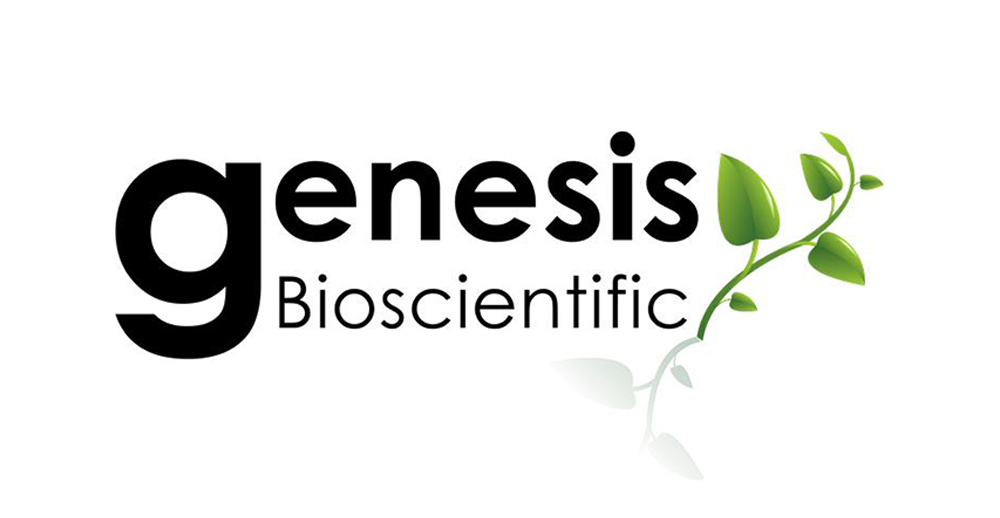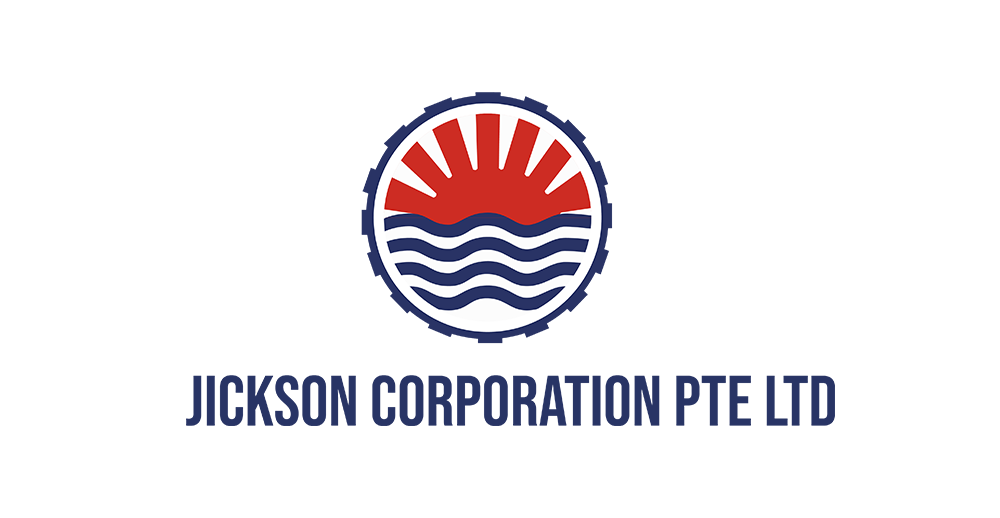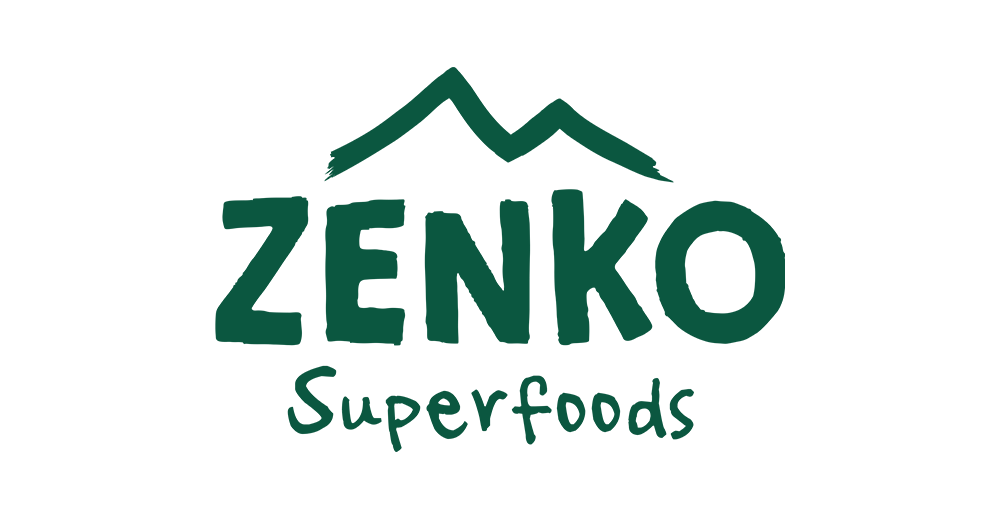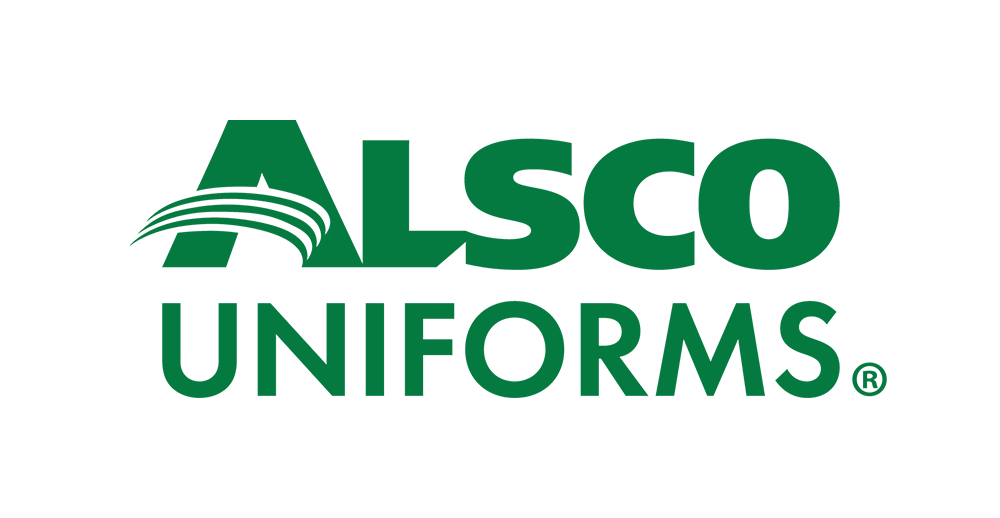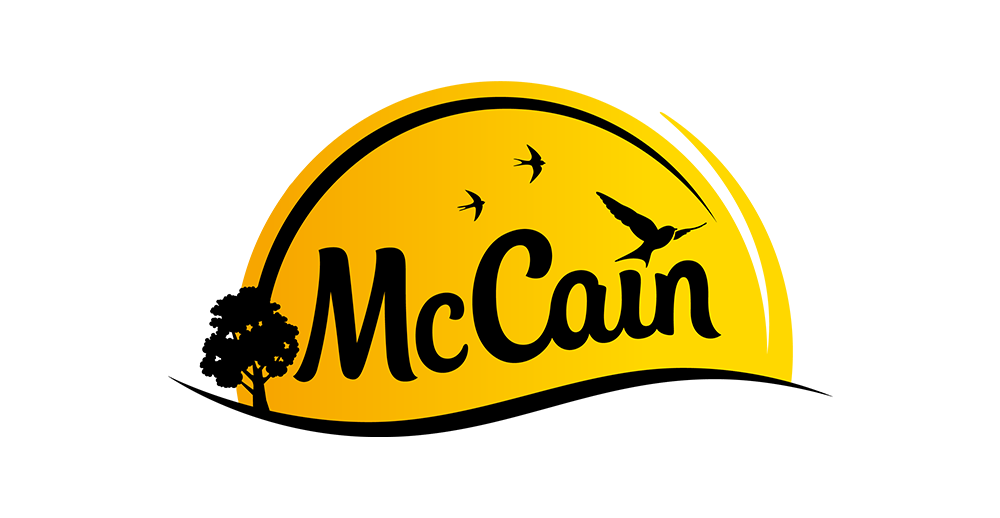As global waste generation continues to rise, the demand for sustainable and efficient waste management has never been more pressing.
Integrated Waste Management (IWM) presents a forward-thinking approach, combining multiple waste treatment and disposal methods to reduce environmental impact and maximize resource recovery.
By incorporating waste-to-energy, advanced recycling, composting, and digital tracking systems, IWM offers a comprehensive strategy to tackle modern waste challenges.
With rapid urbanization and changing consumption patterns, traditional waste disposal methods, such as landfilling and incineration, are no longer viable in the long run due to environmental and economic drawbacks.
Instead, the future of integrated waste management is driven by circular economy principles, digital transformation, and energy-efficient recovery methods, ensuring that waste is seen as a valuable resource rather than a burden.
Tuas Nexus, Singapore’s first integrated waste and water treatment facility, is a prime example of this innovation. Designed to optimize resource efficiency, it demonstrates how IWM can enhance sustainability while addressing national waste concerns.
However, similar pioneering projects are emerging worldwide, reinforcing the global shift toward smarter, more integrated waste solutions.
This blog explores the main trends, groundbreaking innovations, and real-world case studies shaping the next generation of waste management globally.
Current Global Waste Management Challenges

Global waste production is rising alarmingly, straining existing waste management systems and increasing environmental risks.
Municipal solid waste generation is expected to grow from 2.1 billion tonnes in 2023 to 3.8 billion tonnes by 2050, intensifying concerns over pollution, resource depletion, and greenhouse gas emissions.
Many regions rely on landfilling and incineration, which pose long-term environmental and economic challenges.
Landfills are significant sources of methane emissions, a greenhouse gas significantly more potent than CO₂, while incineration can release harmful pollutants if not managed with proper technology.
Inconsistent recycling infrastructure and inadequate waste policies further contribute to inefficiencies, resulting in low recovery rates and high contamination levels in recyclable materials.
Governments and industries worldwide are implementing policy-driven waste solutions to promote sustainability and efficiency. The circular economy and waste model emphasizes waste reduction, reuse, and advanced recycling systems to minimize landfill dependency.
Countries like Singapore and Japan have invested in waste-to-energy solutions, converting waste into electricity while reducing landfill use.
In regions like the European Union, North America, and Asia, regulatory frameworks like the EU’s Circular Economy Action Plan encourage industries and individuals to adopt more sustainable waste practices.
However, achieving long-term progress requires continuous innovation, public participation, and stronger collaboration across sectors to develop more effective and scalable waste management strategies.
Key Trends Defining the Future of Waste Management
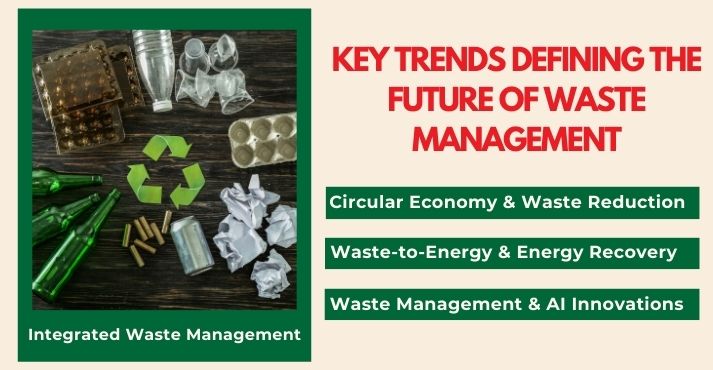
Waste generation continues to rise as urbanization and consumption patterns increase, making efficient waste management more critical. Currently, at least 33% of global waste is mismanaged through open dumping or burning, posing severe environmental risks.
To address these challenges, the waste management trends of 2025 emphasize sustainability, efficiency, and technological advancements.
From circular economy principles to AI-powered waste solutions, industries and communities prioritize methods that reduce environmental impact and enhance resource recovery.
Circular Economy & Waste Reduction
The circular economy model prioritizes waste reduction by creating products that support reuse, repair, and recycling, significantly minimizing landfill dependency.
This strategy enhances resource efficiency and supports environmental sustainability by moving away from the traditional linear produce, use, and disposal model.
Several cities have successfully implemented zero-waste initiatives to support this transition. San Francisco, for example, has achieved an 80% waste diversion rate through strict recycling mandates and composting programs.
Similarly, Japan’s Kamikatsu town has set a goal to become fully zero-waste by encouraging residents to sort waste into more than 45 categories.
Legislative frameworks like the EU’s Circular Economy Action Plan and corporate commitments to recycling innovations further reinforce these efforts.
Moreover, industries are incorporating green waste solutions into their production processes, aligning with sustainability goals and regulatory requirements. Many companies invest in biodegradable packaging, closed-loop manufacturing, and sustainable material sourcing.
Brands such as Patagonia and IKEA have implemented take-back programs, ensuring used products are recycled or refurbished rather than discarded.
Patagonia’s Worn Wear program extends product life while boosting resale profits, while IKEA’s Buy Back initiative turns returned furniture into new sales, promoting circular consumption.
Waste-to-Energy & Energy Recovery
Waste-to-energy solutions provide a dual benefit: reducing landfill waste while generating power. These facilities convert non-recyclable waste into electricity, heat, or fuel, offering an alternative to fossil fuels.
Countries like Sweden and Singapore have integrated waste-to-energy solutions into national waste strategies. Sweden has nearly eliminated landfills, with only 1% of its waste ending in dumps.
By incinerating around 50% of its municipal solid waste, the country generates district heating for one million homes and electricity for 250,000. The remaining 47% is recycled, reinforcing Sweden’s position as a leader in waste recovery.
Singapore’s Tuas Nexus facility is another advanced model, integrating wastewater and solid waste treatment to optimize energy recovery and resource efficiency.
Advancements in recycling innovations are improving waste-to-energy efficiency. Technologies like plasma gasification and anaerobic digestion are emerging as eco-friendly methods to maximize energy output while minimizing emissions.
These advancements support the transition toward a circular economy and waste management system prioritizing resource recovery.
Smart Waste Management & AI Innovations
The rise of smart waste management technologies is revolutionizing waste collection, sorting, and tracking. AI-driven automation, IoT-enabled waste bins, and robotic sorting systems make waste management more efficient and data-driven.
One example is South Korea’s AI-powered smart bins, which use sensors to track waste levels and optimize collection routes, reducing fuel consumption and operational costs.
In Europe, robotic sorting facilities use AI and machine learning to improve recycling rates by accurately identifying materials. Blockchain-based waste tracking systems also enhance transparency and compliance in waste disposal processes.
Smart cities are incorporating digital waste management platforms that analyze data to predict waste generation trends, enabling proactive resource allocation.
Governments and private sectors are collaborating to implement AI-powered waste sorting robots in recycling plants, increasing processing speed and accuracy. These technologies are not only improving efficiency but also contributing to long-term sustainability goals.
Singapore’s Tuas Nexus – A Model for Future Facilities
Singapore’s Tuas Nexus is a pioneering example of integrated waste-to-energy and water treatment, setting new standards for sustainable waste disposal methods.
As the world’s first facility to combine solid waste management with used water treatment, Tuas Nexus optimizes resource recovery, reduces carbon emissions, and enhances energy efficiency.
The facility generates electricity by processing incinerable waste and wastewater sludge in a single, high-efficiency system while minimizing landfill dependency.
This closed-loop approach significantly cuts environmental impact and aligns with Singapore’s Zero Waste Masterplan and the broader goals of the Singapore Green Plan 2030, which emphasizes sustainable resource management and carbon reduction.
In addition to waste management, Singapore’s commitment to sustainability extends to long-term resource security, as seen in initiatives like 30 by 30 Singapore.
While primarily focused on increasing local food production, 30 by 30 aligns with circular economy principles by promoting resource efficiency and resilience, factors that also support progress in waste management.
Tuas Nexus is a benchmark for global integrated waste management (IWM) projects, demonstrating how large-scale infrastructure balances environmental sustainability with operational efficiency.
Other nations can learn from Singapore’s strategy by investing in energy-efficient incineration, wastewater biogas recovery, and smart waste tracking systems to achieve sustainable waste disposal on a national scale.
The Road Ahead – Policy & Investment in Waste Management
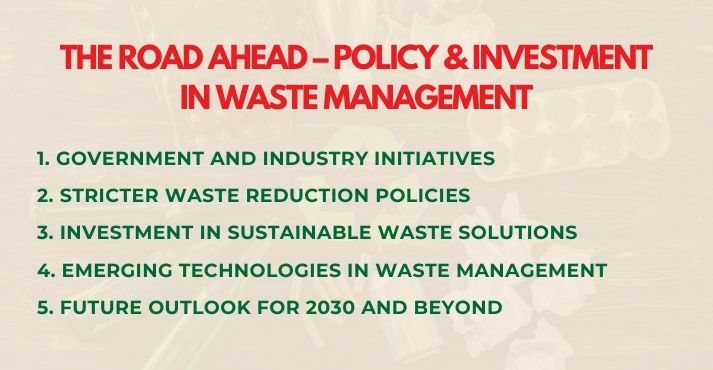
With the global waste crisis escalating, governments, businesses, and international organizations are implementing policies and funding initiatives to improve urban waste management and develop global waste crisis solutions.
Effective integrated waste management (IWM) requires a mix of regulatory reforms, infrastructure development, and private-sector engagement to ensure long-term sustainability.
Many nations are enforcing stricter waste reduction targets and implementing extended producer responsibility (EPR) policies to hold corporations accountable for post-consumer waste.
The European Union’s Circular Economy Action Plan and China’s waste import ban are influencing global waste flows, altering how materials are processed and reused.
The financial sector also recognizes waste management as a main investment area, with green bonds, public-private partnerships, and venture capital accelerating advancements in sustainable waste disposal methods.
These investments support AI-powered waste sorting, biodegradable packaging, and energy-efficient recycling technologies.
Meanwhile, waste-to-energy facilities, such as Singapore’s Tuas Nexus, are setting benchmarks for global waste crisis solutions, demonstrating how integrating waste management with energy production can enhance resource recovery and minimize landfill dependency.
By 2030, urban waste management strategies will likely be more data-driven, using smart waste monitoring systems to optimize collection and disposal. Innovations in material science could further reduce landfill reliance, with circular economy models becoming the norm.
As policymakers and businesses align on sustainability goals, the future of waste management will increasingly focus on resource efficiency, carbon footprint reduction, and scalable waste recovery solutions.
Conclusion
The future of waste management relies on technological advancements, sustainable waste disposal methods, and policy-driven initiatives aimed at reducing environmental impact.
Urban waste management innovations and waste-to-energy solutions contribute to addressing the global waste crisis with smarter, more efficient strategies.
Facilities like Singapore’s Tuas Nexus provide examples of integrated waste-to-energy and water treatment solutions, demonstrating how countries can optimize resource recovery and energy generation while minimizing landfill dependency.
These models highlight the potential for sustainable waste disposal methods to drive long-term environmental and economic benefits.
However, tackling the global waste crisis requires greater collaboration among governments, businesses, and communities. Investments in urban waste management, recycling technologies, and global waste crisis solutions will be essential to creating a circular economy.
By prioritizing innovation and international cooperation, the path toward a more sustainable and efficient waste management future is within reach.


